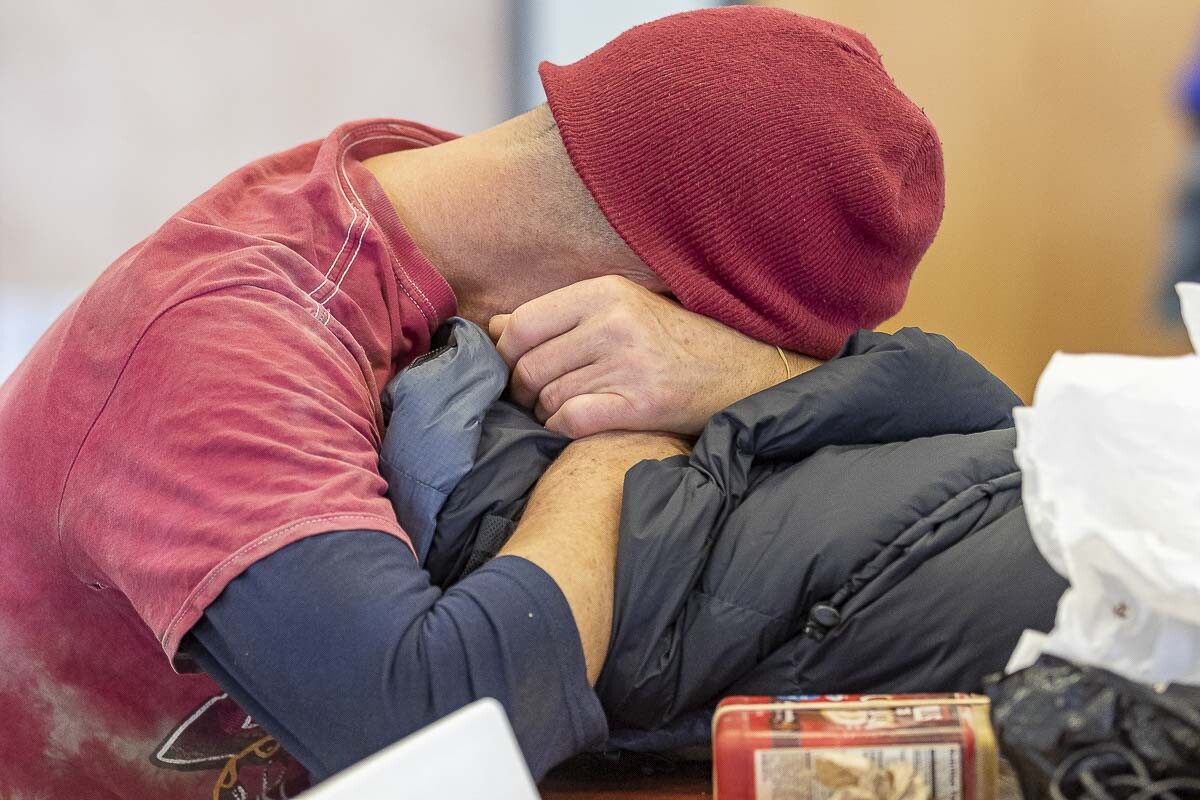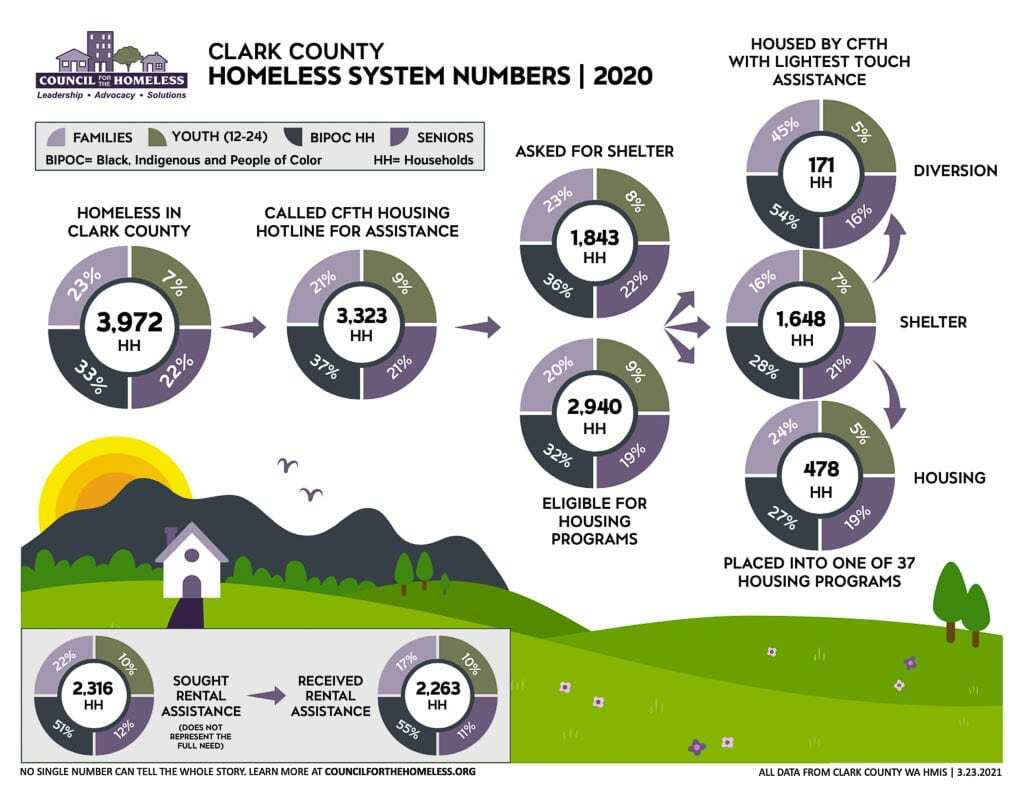An increase in funding helped people with rent and provided more shelter space in 2020
CLARK COUNTY — Despite the pandemic, or perhaps because of the response to it, homelessness in Clark County rose by less than one percent last year compared with 2019, and nearly twice as many people who sought shelter were able to find it.

Those are two of the takeaways from the 2020 Homeless Crisis Response System Report issued this week by the Council for the Homeless, a nonprofit that helps advocate for responses to the homelessness crisis in the region.
Due to the pandemic, the annual Homeless Point in Time Count, which is usually done in January, was canceled, so the report lacks a boots-on-the-ground accounting of homelessness in the area.
Data used in the report was gathered from the Homeless Management Information System (HMIS), and from people seeking assistance.
Last year, nearly 4,000 households in Clark County experienced homelessness at some point, comprising 6,395 individuals. There were 3,323 calls for housing assistance to Council for the Homeless, of which 2,297 were placed into one of 37 housing programs.

That was nearly double the placement rate from 2019, illustrating the influx of COVID-19 relief funding which allowed many shelters in Clark County to remain open longer, or to expand space. The county also rented a hotel for several months to house people in need of a spot to self-isolate, and greatly increased the availability of Homeless Motel Vouchers.
The number of households placed into permanent housing programs increased by 90 over 2019, but households eligible for those same programs rose by 33 percent, indicating an increase in people experiencing barriers to housing.

Racial disparities in focus
This year’s report put more of a focus on how homelessness is impacting the area’s BIPOC (Black, Indigenous, and People of Color) communities.
Last year, over one-third of homeless households were BIPOC, while 37 percent of the individuals who reached out to the Council’s housing hotline were in that category.
“We cannot end homelessness in Clark County without addressing the systemic racism that leads to disproportionately higher rates of homelessness within the BIPOC community when compared to the percentage of representation in the general Clark County population,” said Kate Budd, executive director of Council for the Homeless. “For too long we have failed our BIPOC neighbors. Our report underscores the urgent need to provide additional support for those most harmed by systemic racism in Clark County.”
According to the report, people who are black or of Pacific Island descent were up to eight times more likely to experience homelessness than someone who is white, and more than twice as likely to live below the poverty line.
The disparity was also apparent in those receiving rental assistance to prevent them from losing their home. Five times more households received rent assistance in 2020 compared to 2019. Half of the 2,263 households that received that help had at least one person of color.
The potential for experiencing homelessness rose by 0.7 percent for black families in 2020, while falling for all other races and ethnicities, according to the report.
Homeless senior numbers still high
In 2018, there were 606 people over the age of 55 who were homeless in Clark County. That number shot up to 881 in 2019, before dipping slightly to 868 last year.
Still, says Budd, the number of elderly people experiencing homelessness shows a troubling trend that needs added focus now and into the future.
“Our seniors certainly deserve better treatment than to be living on the streets or in their cars,” Budd said. “The leap in seniors experiencing homelessness since 2018 signals a crisis is occurring among that population. Lack of affordable housing, especially for those on fixed incomes, is what we hear time and time again.”
More than half of the area’s homeless population was female or non-binary, according to the report, and nearly a quarter were under the age of 18.
Key causes of homelessness
Contrary to commonly held views, the majority of people living unsheltered in Clark County are not long-term homeless individuals. In 2020, nearly two-thirds of homeless individuals were experiencing homelessness for the first time, and had not been involved in the local homeless system for at least 20 years.
The rate of people falling into homelessness in 2020 was largely equal to the rate of people being moved out of homelessness into permanent housing.
The key causes of homelessness remain a lack of affordable housing or rising rents, followed by domestic violence and household crises.
Pandemic funding provided a boost
Two federal relief packages, along with private fundraising efforts and state funding, helped to boost money put into the area’s homeless problem.
That funding helped to bolster shelter space, increase rent assistance, pay for utilities, and provide hotel vouchers for people in need. It may also provide funding for drug treatment and mental health programs, both key components in a wider approach to addressing the homelessness crisis.
For anyone interested in learning more about the response to homelessness in and around Clark County, Council for the Homeless has a webinar scheduled for April 20. Details and a link to register for the free event is available here.




